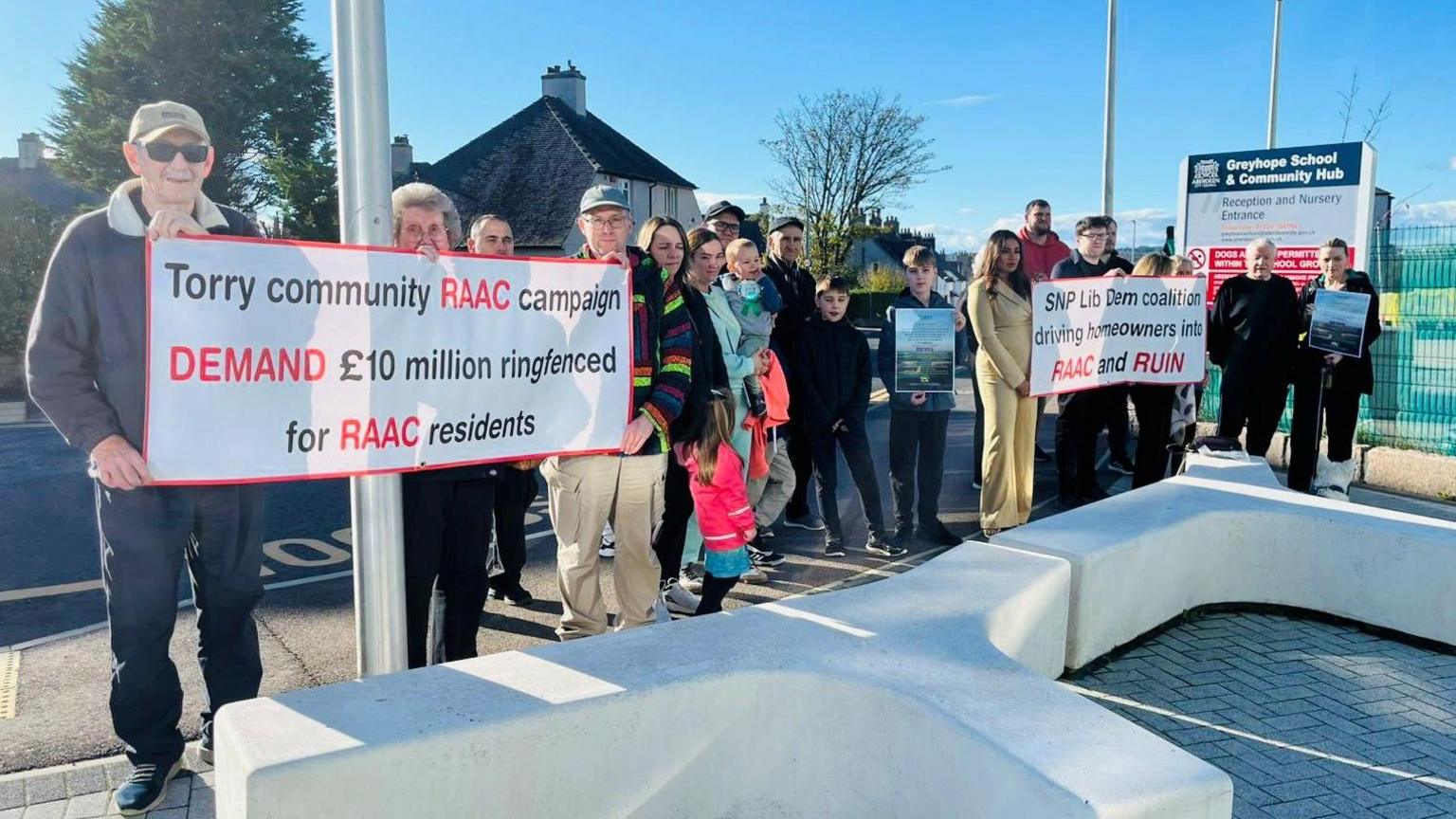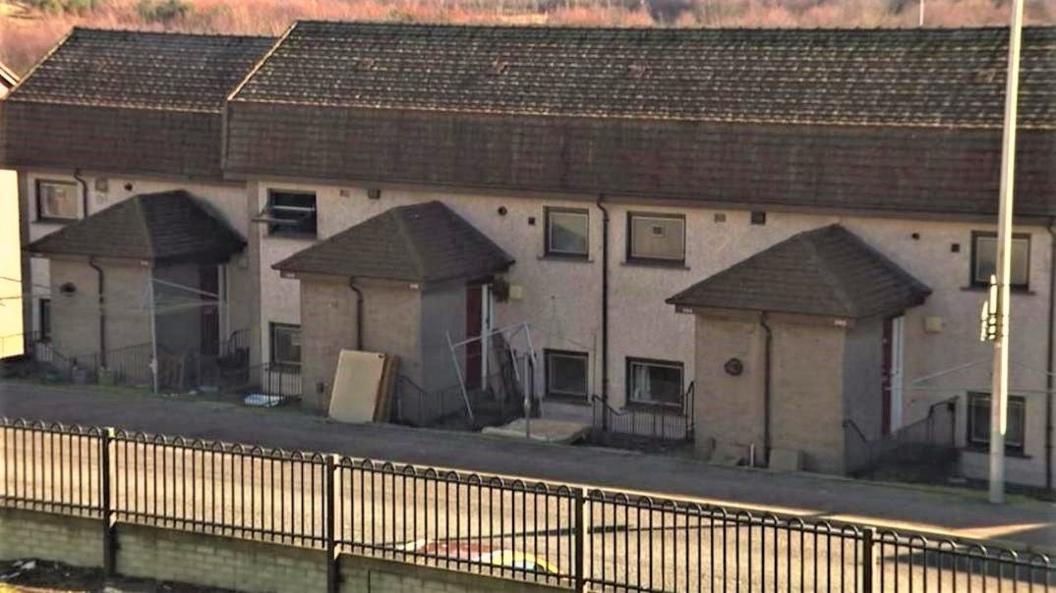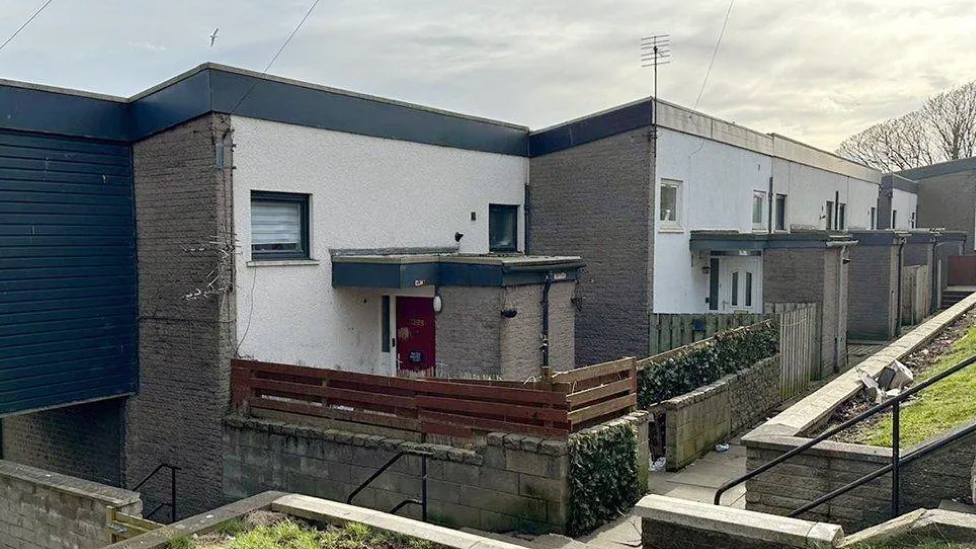Raac residents 'deflated' after housing secretary talks

Ian Lippe said he was disappointed in the wake of the meeting
- Published
Aberdeen residents whose homes are set to be demolished due to the presence of potentially dangerous concrete said they were "deflated" after talks with housing secretary Màiri McAllan and local councillors.
More than 500 homes in the Balnagask area of the city contain reinforced autoclaved aerated concrete (Raac).
The Scottish government agreed a funding deal worth £10m with Aberdeen City Council (ACC) earlier this month to help support residents.
McAllan held her first face-to-face talks with some residents and councillors in Aberdeen on Wednesday afternoon. Residents said they did not get clarity about how the money would be spent.

A protest was held outside the meeting in Aberdeen
After the meeting there were some angry exchanges outside between some residents and the local authority's co-leaders Christian Allard and Ian Yuill.
Mr Allard said talks remained ongoing with council and Scottish government officials about the next step forward.
Homeowners impacted have been waiting to hear details of exactly how the money could be used.
Many are upset at ACC's offers for their properties - saying it would leave them tens of thousands of pounds out of pocket.
In the meeting was resident Annette Duncan, 60, who fears she could be left about £35,000 down, based on house valuations after Raac was found.
She said it was "very difficult to say" how the meeting went, but that there were "not really any straight answers".

Annette Duncan said she was waiting to see what would now happen
She said: "We've still got to wait on the council to decide what they're going to use this money for.
"We wanted to know what the £10m was for. We just never got a straight answer."
Asked how she was feeling, she said: "Pretty deflated, I really thought we were going to get something, come out of there with a smile or something."
She said it was now a case of "just wait and see", but that she was not holding out hope for an increased offer.
Another resident, Ian Lippe, 37, fears he could lose more than £50,000.
He told the BBC's Good Morning Scotland he was left "disappointed" after the meeting.
"Probably naively we went in there thinking that we were going to get answers, a bit of clarity, find a bit of almost light at the end of the tunnel," he said.
Mr Lippe said he felt the housing secretary seemed to "be on our side", but they were left with questions about how the £10m would be used.

Housing secretary Màiri McAllan met residents and councillors
McAllan told BBC Scotland News she was "really pleased" to get the "valuable opportunity" to hold the talks.
Asked about clarity on how the money would be spent, she said: "So we've now made that money available to ACC.
"It will be available for Raac, but the question of what it's put to is very much a question for the city council.
"But the value of today was that homeowners got to make representations to the council about what they would like to see happen to it."
She added that she hoped to see progress in "weeks not months".
What is Raac?
Raac stands for reinforced autoclaved aerated concrete.
It is a lightweight material that was used mostly in flat roofing, but also in floors and walls, between the 1950s and 1990s.
It is a cheaper alternative to standard concrete, is quicker to produce and easier to install.
It is aerated, or "bubbly" - like an Aero chocolate bar.
But it is less durable and has a lifespan of about 30 years.
Its structural behaviour differs significantly from traditional reinforced concrete.
Moreover, it is susceptible to structural failure when exposed to moisture. The bubbles can allow water to enter the material.
Raac is often coated with another material, such as bitumen on roofing panels. But this material can also degrade.
The Health and Safety Executive (HSE) said Raac was now beyond its lifespan and could "collapse with little or no notice".
Related topics
- Published11 October

- Published2 October

- Published19 August
